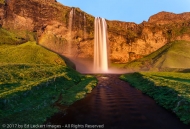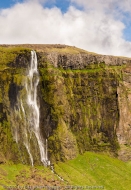


We probably all have a pretty good idea of what a wilderness is – it’s the exact opposite of the urban sprawl and nonsense most of us endure on a daily basis. But what is it really?
Wikipedia describes a wilderness or wildland as “a natural environment on Earth that has not been significantly modified by civilized human activity”, or “The most intact, undisturbed wild natural areas left on our planet…”. But many countries around the world have devised formal systems for recognizing areas that are particularly special and in need of enduring protection from human destruction. In the United States, these areas are called Wilderness Areas, and are protected by the Wilderness Act of 1964.
The Wilderness Act was written by Howard Zahniser. Born in 1906 the son of a Pennsylvania minister, he joined the Junior Audubon Club as a young boy and fell in love with the Adirondack Mountains. A career journalist, he joined The Wilderness Society, eventually becoming the organization’s executive director. He came to realize that without a comprehensive act to protect valuable wildlands, conservationists faced a continuous battle as countless parcels of land needed to be defended individually against destruction. He saw that single act of Congress could potentially remove this ongoing burden.
Beginning in 1956, despite failing health, Zahniser worked on draft after draft of the act, steering it through numerous hearings until finally, in 1964, it was passed by Congress and signed by President Johnson. The act established the National Wilderness Preservation System, which currently protects more than 109 million acres.
The document is actually a fairly quick read, at least compared to what comes out of Congress these days, but I’ll hit the highlights. The most often quoted part is this:
DEFINITION OF WILDERNESS
A wilderness, in contrast with those areas where man and his works dominate the landscape, is hereby recognized as an area where the earth and its community of life are untrammeled by man, where man himself is a visitor who does not remain.
Furthermore, a wilderness:
(1) generally appears to have been affected primarily by the forces of nature, with the imprint of man’s work substantially unnoticeable; (2) has outstanding opportunities for solitude or a primitive and unconfined type of recreation; (3) has at least five thousand acres of land or is of sufficient size as to make practicable its preservation and use in an unimpaired condition; and (4) may also contain ecological, geological, or other features of scientific, educational, scenic, or historical value.
You might have noticed that the concept of protected wilderness seems to overlap the concepts of National Parks and other types of protected sites managed by various agencies such as the National Park Service, US Forest Service, Fish and Wildlife Service, Bureau of Land Management, state parks, and others. While many areas of designated wilderness are in fact managed by some of these agencies, the Wilderness Act takes matters of preservation a step further. For example, the US Forest Services manages land using the concept of “Multiple Use”, including recreation, timber, grazing, watershed, wildlife habitat. The Wilderness Act protects wilderness areas by withdrawing them from standard multiple use management. With some exceptions, prohibitions include closure to motorized and mechanized vehicles, timber harvest, new grazing and mining activity, or any kind of development.
Did you notice that bit about motorized and mechanized vehicles? This means you generally won’t find a road in a Wilderness Area, which can lead to some interesting map work. Take a look at the wilderness map below of a section of Death Valley National Park. The dark green area inside the purple lines is wilderness, and the light green is not. Um, come again? Well, if you click on the image to enlarge it, you’ll see that all those purple lines are not really single lines, but are actually double lines around roads. There is actually a small buffer around essentially every road so that motorized vehicles are, in theory, never inside a wilderness area.
In fact, you typically won’t find so much as a wheelbarrow inside a wilderness area, much less something as obnoxious as a chain saw. When I work on trails with Washington Trails Association, if we have to log out a section of blowdown on a trail in a wilderness area, we’re packing in six-foot crosscut saws to do the job. I once spent an entire weekend doing nothing but crosscut work on a trail up north near the Canadian border. It’s great exercise!

A hiking trail leads through a copse of turning larch trees down to a lake, in the Alpine Lakes Wilderness, Washington.
In preparing for this article, I decided to examine all of my (tens of thousands of) images to see which ones were actually taken inside a designated wilderness area, and the results really surprised me. While it’s often obvious that you are entering a wilderness because of the large sign attached to a tree along the trail, there were a substantial number of cases where I was either in or on the edge of a wilderness area and didn’t even realize it.
As part of this effort, I have added keywords to those images indicating which wilderness area they are in and updated them in the Image Gallery on this site. This makes it possible to then search on the keyword Wilderness Area to see all of my images from designated wilderness. Keep in mind that this is limited to the United States’ National Wilderness Preservation System. And, it’s also limited to the images I have published – there are thousands more in my archives that may or may not see the light of day in the future!
So included here is a small sampling of some of my favorites. Perhaps this will inspire me to go back through the archives and find a few more to publish. You never know.
Enjoy!

Desert wildflowers bloom near Ashford Junction in the Death Valley Wilderness, Death Valley National Park, California.

Thanks for the article, Ed. Keep ’em coming.